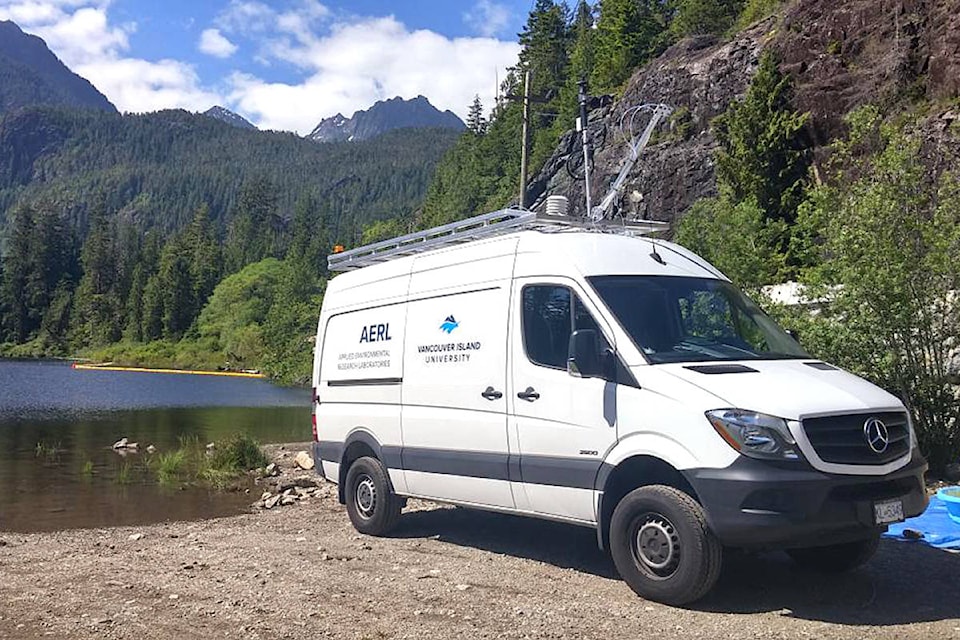MIKE YOUDS
SPECIAL TO THE NEWS
Long-awaited open burning restrictions designed to reduce health risks in B.C. communities from exposure to smoke particulate are expected in the new year.
Eight years in the making, the proposed revisions represent the first updates to the Open Burning Smoke Control Regulation in 25 years. If approved by provincial cabinet, the new rules would restrict slash burning in newly designated zones surrounding population centres such as Port Alberni while increasing setbacks around schools and hospitals.
“The idea is to have stricter rules in and around where people live and less strict rules in areas where they don’t live,” said Markus Kellerhals, senior air quality science officer with the Ministry of Environment and Climate Change.
Port Alberni Air Quality Council, a public advocacy group formed in 2003 to promote clean air, believes the new rules will reduce smoke from forestry and farming activity.
“If followed and enforced, I think so,” said Anna Lewis, who chairs the council. “Port Alberni is a red zone community, which means we exceed levels of PM 2.5. We’re at the threshold in terms of what the atmosphere can absorb. There can be no increased industrial emissions. Any changes will have an impact.”
Burning of debris from a Cherry Creek farm has been the source of a spate of complaints in the last couple of years. The landowner has 20 debris piles remaining, which would be a problem if they remain when new rules are bought in, Lewis noted.
Revisions include greater restrictions on burn times and increased setback distance of one kilometre from schools and hospitals. Debris under 10 cm in diameter would be exempt.
Dr. Paul Hasselback, chief medical health officer with Island Health, said the updated regulation reflects an improved understanding of the health risks associated with smoke particulate since restrictions were introduced in the early 1990s. The fine particulate known as PM 2.5 is cause for greatest concern.
Among Island communities, Port Alberni and Courtenay were noted in the province’s most recent air zone report for periodically exceeding national air quality standards for PM2.5.
In consultation with stakeholders over the proposed changes, a range of concerns were raised, Kellerhals said. The forest sector felt stricter rules could make it more difficult to meet forest fire hazard abatement requirements. Others felt the update doesn’t go far enough.
“The public says they don’t go far enough and burning should be banned anywhere near communities,” Kellerhals said.
The new rules don’t apply to residential wood burning or the burning of residential yard debris. Those were subject to earlier legislation that tightened rules around wood burning. The regional district continues to offer a $400 rebate designed to reduce smoke emissions through woodstove changeouts.
Despite concerns, the new rules are expected to meet with cabinet approval.
“I would be incredibly surprised if they’re not approved just because the amount of time and background work that have gone into this,” Lewis said. “Basically, what’s important about these is that they really improve the ability to manage smoke in high-density areas.”
Existing regulations apply only to the municipality proper while the ones include the outlying areas of Beaver Creek, Cherry Creek, Sproat Lake and Beaufort, she noted. Currently, the system doesn’t account for local geography, which can smoke, particularly during thermal inversions in winter.
Lewis is aware of the need for greater public awareness in a valley where residential wood burning remains common practice. Improved data from Interior Health and through the ongoing VIU air quality mapping project, which brought a mobile mass spectrometry lab to the valley last summer, will contribute to greater awareness.
“When the new regulations are rolled out, I can see the air quality council using its mechanisms to try to educate the public,” she said.
Hasselback said medical evidence, while not specific to Port Alberni, is well established.
“I can tell you that’s going to cause a health impact. Can we measure that? It’s tough to make that measurement in small populations of under one million.” The evidence from much larger populations, however, confirms a direct link, he said. The critical importance of air quality to health is often understated, he added.
“It’s one of the major environmental exposures that’s going to lead to poor health outcomes.”
